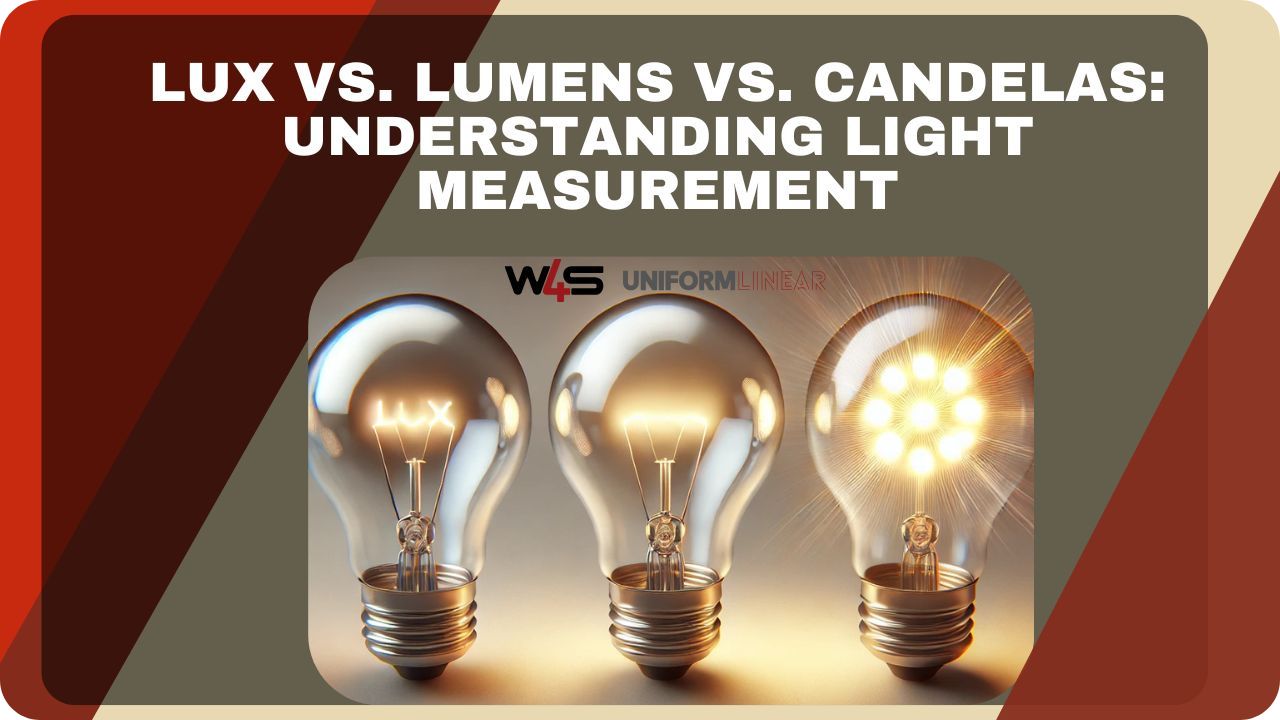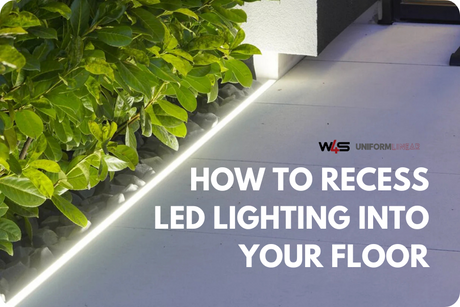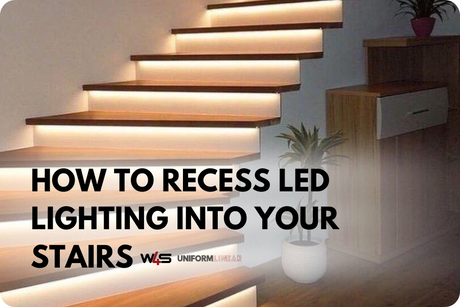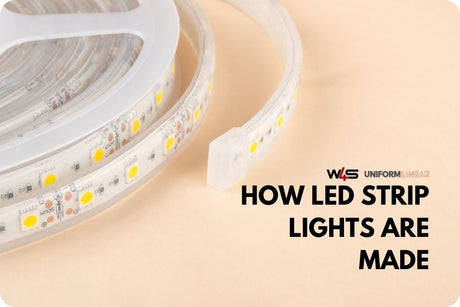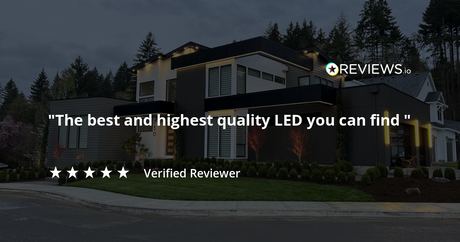Have you ever struggled to understand the difference between lux, lumens, and candelas? These are all important terms in light measurement that help define brightness in different ways.
Many people get confused when shopping for lighting or learning about brightness. But don’t worry, it’s easier than it seems!
The good news is that once you understand these terms, choosing the right lighting becomes much simpler.
With a little knowledge, you’ll feel more confident in making decisions. If you're upgrading your home lighting, picking the best flashlight, or selecting the right lighting for work, outdoor activities, or photography, you’ll know exactly what to look for.
In this guide, we’ll break it all down in a simple way. You’ll learn what each term means and how it affects your lighting choices.
Lumens: The Total Light Output
Lumens (lm) measure the total amount of light a source emits in all directions. Think of it as the overall brightness a bulb or candle gives off. The higher the lumens, the brighter the light.
When you buy a light bulb, the packaging usually states the lumens. A standard 60-watt incandescent bulb emits about 800 lumens. An LED bulb with the same brightness uses much less energy.
Lumens are a key part of light measurement. They tell you how much visible light a source produces, no matter where it shines.
Lumens matter when choosing lighting for large spaces. A high-lumen bulb works well in bright areas like kitchens or offices. If you want a cozy atmosphere, go for a bulb with lower lumens. The amount of visible light you need depends on the room's purpose.
Candelas: The Intensity of Light in One Direction

Candelas (cd) measure the intensity of light in a specific direction. If you focus a flashlight beam, the light appears brighter. This happens because the same lumens are concentrated in a smaller area.
Flashlights, spotlights, and car headlights often use candelas to describe brightness. If light spreads in all directions, it looks softer. A focused beam, however, appears much brighter. That’s the key difference between lumens and candelas.
A candle emits about one candela. A strong flashlight can reach over 100,000 candelas!
If you need lighting for a spotlight, projector, or lighthouse, candelas matter most. They determine how far and how intense the light will be in one direction.
Lux: The Light Falling on a Surface
Lux (lx) measures how much light reaches a specific area. It’s the number of lumens spread over a square meter. The same light source can create different lux levels depending on distance.
For example, a 1000-lumen light source spread across 10 square meters results in 100 lux. But if that same light is focused on just 1 square meter, the lux level jumps to 1000. This shows that light measurement isn’t just about brightness. It’s also about how light is distributed.
Lux is important for workplaces, photography, and home lighting. A well-lit office should have around 500 lux. A cozy living room feels comfortable at 200 lux. Streetlights range from 5 to 50 lux, depending on the area.
If a room feels too dim despite having a bright bulb, the issue might be lux. The light could be too spread out, making it less intense in one spot.
Breaking It Down with the Candle Example

The image above helps visualize how these light measurement units work together. Let’s use a single candle as a reference to break it down further.
Luminous Flux (Lumens): The Total Light Output
Lumens measure how much total light a source emits. Think of it as the raw brightness of the candle.
No matter where you stand, the total lumens stay the same. A candle emits about 12 lumens. A 60-watt light bulb emits around 800 lumens. The higher the lumens, the brighter the light.
However, lumens alone don’t determine whether you have the ideal light for a space. They tell you how much light is produced, but not where it goes or how it's distributed.
Luminous Intensity (Candelas): Light in One Direction
Candelas measure how strong the light is in a specific direction. If you focus part of the candle’s light into a beam, that beam has more candelas and greater luminous intensity.
A candle emits about one candela. However, a flashlight with a focused beam has a much higher candela rating, even with the same lumens. That’s why spotlights and flashlights use candelas to describe their brightness.
Illuminance (Lux): Light That Reaches a Surface
Lux measures how much light actually reaches an area, also known as the illuminance level. If you hold a candle close to a table, the lux level is high. If you move it farther away, the same light spreads out, and the lux decreases.
Two lights with the same lumens can look very different depending on distance. A 1000-lumen light in a small room looks much brighter than in a large hall.
Luminance (Candelas per Square Meter): How Bright a Surface Looks
Luminance is how bright a surface appears to your eyes. It depends on how much light reflects off it.
A white table looks brighter than a dark one under the same bright light. That’s because lighter surfaces reflect more light, while darker ones absorb it.
How These Terms Affect Your Lighting Choices

Understanding light measurement helps you choose the right lighting for different situations. You might be buying a light bulb. Maybe you need a flashlight. Or you could be setting up lights for a workspace. Knowing the difference between the three can make a big difference.
Buying a Light Bulb
If you want a bright room, choose a light source with high lumens. A 1000-lumen bulb provides much more actual light than a 500-lumen one. For cozy lighting, fewer lumens work better.
I learned this the hard way when I first moved into my apartment. I bought a fancy-looking bulb without checking the lumens, and my living room was so dim I could barely read at night. I had to replace it with a higher-lumen option, and the difference was huge. Now, I always check the lumens before buying bulbs.
Brightness is not only an important aspect of light, but you also need to consider color temperature. A high-lumen bulb with a cool white tone is great for kitchens and workspaces, while a warm white one is better for relaxing areas like bedrooms. Making sure your bulb matches the right lighting fixture helps achieve the best illumination.
Choosing a Flashlight
For a focused beam, check the candelas. A flashlight with high candelas will shine farther, even if another has the same lumens. This is useful for outdoor activities like camping, hiking, or biking at night.
One time, I went on a night hike with a cheap flashlight that had high lumens but low candelas. The beam was wide, but it didn’t reach far. My friend had a flashlight with high candelas, and his brighter light cut through the darkness like a spotlight. Since then, I always check the candelas before buying a flashlight.
If you need a flashlight for everyday use, something with a balance of lumens and candelas works best. For emergencies or outdoor adventures, go for a model with higher candelas for a better range.
Setting Up an Office
For comfortable reading and working, you need enough lux. Offices typically require around 500 lux, while a well-lit kitchen may need even more. A good light source ensures proper light intensity reduces eye strain and improves productivity.
If you work from home, good lighting is just as important as a good chair. A desk lamp with the right lux level can make long hours in front of a screen much easier on your eyes. Natural light also helps—positioning your desk near a window can improve both mood and focus. Using an LED light can also provide consistent and energy-efficient illumination.
For video calls, having proper lighting is crucial. A well-lit space with balanced lux makes you look more professional and helps avoid harsh shadows on your face. Understanding the right unit of light for your setup ensures optimal brightness and clarity.
Cycling and Road Safety
Bike lights need the right balance of lumens and candelas. A front light with high lumens helps you see, while one with high candelas ensures you’re visible to others. Rear lights should have enough candelas to stand out, even in traffic.
If you cycle at night, a strong front light with high light intensity is essential. I once had a bike light with decent lumens but low candelas, and cars barely noticed me. After switching to one with a high candela rating, the brightness of light made me feel much safer on the road.
Daytime running lights also improve safety. Even when the sun is out, a flashing rear light with high candelas helps drivers spot cyclists from a distance.
Photography and Videography
Lighting is crucial for capturing clear images. The right lux ensures your subject is well-lit without harsh shadows. Professional photographers often use controlled lighting to achieve the perfect balance.
For portrait photography, soft lighting with enough lux creates natural-looking results. Harsh lighting can cause overexposed spots, while too little light makes images grainy.
Videographers also adjust lux levels to match different environments. A well-lit indoor space requires different lighting than an outdoor shoot. The right balance ensures a professional and visually appealing result.
Stage and Event Lighting
Concerts, theaters, and stadiums use precise light measurements to create the right atmosphere. High candelas focus a beam of light on performers, while a well-balanced lux level ensures the audience sees everything clearly.
Spotlights use high candelas to direct attention, while background lighting with enough lux keeps the entire scene visible. Stage designers carefully plan lighting setups to enhance performances and guide the audience’s focus. Using an LED light can provide energy-efficiency and dynamic lighting effects that adapt to different scenes.
For outdoor events, lighting needs to be both functional and atmospheric. Bright lumens keep pathways visible, while colorful lights create an engaging experience. Choosing the right unit of light ensures the perfect balance.
Growing Indoor Plants

Plants need the right amount of lux to thrive. Some require bright, direct light, while others do well in lower-light environments. Understanding the power of light and checking the lumens of your grow lights ensures they get enough energy for healthy growth. Proper indoor lighting is essential for keeping plants healthy, especially in spaces with limited natural light.
I once tried growing herbs indoors but failed because I didn’t pay attention to lux levels. My basil struggled until I placed it under a proper grow light with enough lumens. After that, it flourished.
Different plants have different lighting needs. Leafy greens often need medium lux, while fruiting plants require stronger light. If you’re growing plants indoors, measuring light levels can make a big difference.
A little knowledge about these helps in everyday life. Whether for home, work, or hobbies, the right lighting makes everything easier and more effective.
Now that you know the difference between lumens, lux, and candelas, you can make better grow lighting choices. If you’re picking a light bulb, flashlight, or photography setup, understanding these measurements helps you find the right brightness for your needs.
FAQs About Lux, Lumens, and Candelas
What is the difference between lumens, lux, and candelas?
Lumens (lm) measure the total light output from a source. Candelas (cd) measure the intensity of light in a specific direction. Lux (lx) measures how much of that light actually reaches a surface.
How many lumens is a candela?
There isn’t a fixed conversion because lumens measure total light output, while candelas measure directional intensity. However, you can estimate lumens using this formula:
Lumens = Candelas × 4π (for a full sphere of light).
Is lux the same as lumens?
No, lux and lumens are different. Lumens tell you how much total light a source emits, while lux tells you how much of that light reaches a specific area. One lux equals one lumen per square meter.
Is 5000 lux the same as 5000 lumens?
No. Lux depends on the area the light covers. A 5000-lumen light concentrated in a small space will have high lux, while the same 5000 lumens spread across a large area will result in much lower lux.
How many lux is equal to 1 candela?
It depends on the distance. The formula is:
Lux = Candelas / Distance²
For example, 1 candela at 1 meter = 1 lux. If the same light is 2 meters away, it becomes 0.25 lux (since 2² = 4). The visible intensity of light decreases as distance increases.
